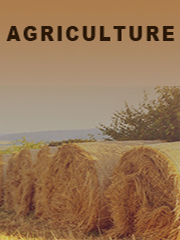TOP CATEGORY: Chemicals & Materials | Life Sciences | Banking & Finance | ICT Media

Download Report PDF Instantly
Report overview
Definition
Animal Performance Enhancers encompass a diverse portfolio of feed additives, supplements, and precision‑nutrition solutions formulated to boost growth rates, optimize feed conversion ratios (FCR), and enhance overall health and productivity in livestock, poultry, swine, aquaculture, and equine sectors. Core categories include antibiotics (now heavily regulated), hormonal implants, beta‑agonists, feed enzymes that improve nutrient digestibility, probiotics and prebiotics that fortify gut microbiota, organic acids that modulate pH and pathogen load, phytogenic compounds (essential oils, plant extracts) that offer natural growth‑promoting alternatives, and a spectrum of specialty ingredients such as nucleotides, peptides, and functional fibers. In Brazil—one of the world’s leading exporters of meat and animal protein—performance enhancers form the backbone of intensive production systems, enabling producers to meet stringent export specifications on carcass weight, lean‑meat yield, and residue compliance while lowering environmental footprint per kilogram of protein produced.
Market Size
Brazil Animal Performance Enhancers market size was valued at US$ 456 million in 2024 and is projected to reach US$ 623 million by 2032, at a CAGR of 5.3% during the forecast period 2024-2032.
Market Dynamics (Drivers, Restraints, Opportunities, and Challenges)
Drivers
Export Market Imperatives: Brazil’s status as a top poultry and beef exporter to the EU, Middle East, and Asia necessitates strict adherence to growth and residue standards, boosting demand for certified enhancer formulations.
Shift to Antibiotic‑Free Protocols: Regulatory curbs and consumer preference drive adoption of phytogenics, organic acids, and synbiotics, catalyzing double‑digit segment growth.
Precision Nutrition & Genetic Progress: Rapid gains in broiler and swine genetics heighten the importance of tailored micronutrient and enzyme packages to unlock genetic potential.
Sustainability Pressures: Corporate ESG mandates push for additives that lower methane emissions in cattle and reduce nitrogen excretion, aligning with low‑carbon meat certifications.
Restraints
Volatile Raw Material Prices: Fluctuations in botanical oil, amino acid, and enzyme substrate prices can compress margins and deter smaller producers.
Regulatory Complexity: Divergent Mapa (Brazilian Ministry of Agriculture) approval timelines and export‑market MRLs complicate label claims and supply chain coordination.
Knowledge Gaps: Limited extension services in remote livestock regions hinder best‑practice adoption, reducing enhancer ROI.
Opportunities
Plant‑Based Feedstocks: Brazil’s biodiversity offers untapped sources of functional phytochemicals (e.g., cashew nut shell liquid, citrus terpenes) for novel enhancer products.
Digital Feed Management: IoT sensors and blockchain traceability can pair with enhancers to validate performance and sustainability outcomes.
Aquaculture Boom: Rapid expansion of tilapia and shrimp farming opens new channels for probiotic and enzyme solutions that mitigate water quality issues.
Challenges
Antimicrobial Resistance (AMR) Scrutiny: Intensifying AMR surveillance could restrict even non‑medically important antibiotics, creating adjustment costs for integrators.
Currency Volatility: Real depreciation inflates imported ingredient costs and impacts price competitiveness abroad.
Climate Extremes: Heat stress events tied to climate change may skew enhancer efficacy and require reformulation for thermal tolerance.
Regional Analysis
Although the report focuses on Brazil as a whole, regional nuances shape demand:
South & Southeast (Paraná, Santa Catarina, São Paulo): Home to export‑oriented poultry and swine integrators; highest adoption of phytogenic and enzyme blends.
Center‑West (Mato Grosso, Goiás): Dominated by beef cattle feedlots; rapid uptake of beta‑agonists and rumen‑protected amino acids to shorten finishing cycles.
Northeast: Emerging aquaculture clusters in Bahia and Ceará drive probiotic demand.
North (Pará, Amazonas): Extensive cattle herds embracing organic acids to reduce enteric pathogens amid humid conditions.
Competitor Analysis (in brief)
The Brazilian landscape features multinational feed‑additive giants alongside domestic innovators. While detailed revenue shares remain proprietary, Ouro Fino Saúde Animal holds a significant footprint via its comprehensive additive line targeting poultry gut health and bovine performance. Multinationals operating manufacturing hubs in Brazil—such as DSM‑Firmenich, Evonik, and Cargill—compete on enzyme portfolios and precision‑nutrition platforms, often co‑developing formulations for specific genetic lines. Start‑ups leverage Brazil’s botanical wealth to commercialize native plant extracts, differentiating through sustainability certifications (e.g., Rainforest Alliance).
Global Animal Performance Enhancers: Market Segmentation Analysis
This report provides a deep insight into the global Animal Performance Enhancers, covering all its essential aspects. This ranges from a macro overview of the market to micro details of the market size, competitive landscape, development trend, niche market, key market drivers and challenges, SWOT analysis, value chain analysis, etc.
The analysis helps the reader to shape the competition within the industries and strategies for the competitive environment to enhance the potential profit. Furthermore, it provides a simple framework for evaluating and assessing the position of the business organization. The report structure also focuses on the competitive landscape of the Global Animal Performance Enhancers. This report introduces in detail the market share, market performance, product situation, operation situation, etc., of the main players, which helps the readers in the industry to identify the main competitors and deeply understand the competition pattern of the market.
In a word, this report is a must‑read for industry players, investors, researchers, consultants, business strategists, and all those who have any kind of stake or are planning to foray into the Animal Performance Enhancers in any manner.
Market Segmentation (by Application)
Market Segmentation (by Type)
Key Company
Ouro Fino Sa
Geographic Segmentation
FAQ
What is the current market size of Brazil Animal Performance Enhancers?
Which are the key companies operating in the Brazil Animal Performance Enhancers market?
What are the key growth drivers in the Brazil Animal Performance Enhancers market?
Which regions dominate the Brazil Animal Performance Enhancers market?
What are the emerging trends in the Brazil Animal Performance Enhancers market?